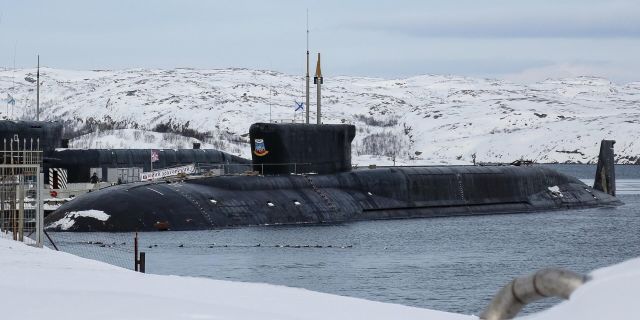TNI: Russian Borey-class submarines are superior to American submarines
Russian Borei-class nuclear submarines surpass the American ones in terms of sonar and situational awareness capabilities and pose a significant strategic threat, writes TNI. The Russian fleet includes four Boreas, and this is not the limit.
Brandon J. Weichert
New Russian Borey-class submarines: the underwater force that will rewrite the rules of the game?
Perhaps the world's best nuclear submarines are in service with Russia. The Borey 955 submarines are equipped with an advanced sonar system that provides the crew with better situational awareness than the most powerful of American competitors.
The sonar system has no analogues
The Irtysh-Amphora-B-055 sonar system surpasses the capabilities of the fourth-generation submarines of the US Navy, including the Ohio and Virginia classes, which form the backbone of the submarine fleet.
Thanks to such capabilities, Russian Borey-class submarines have gained significant strategic advantages over American competitors. And American submariners should take this seriously — this is far from an empty boast.
Borey-class submarines are indeed among the most difficult in the world. Not only are they equipped with perhaps the most technologically advanced sonar systems in the world, but they can also launch Russia's most advanced nuclear weapon, Bulava missiles.
Learn more about the unique submarine
According to the website Naval-Technology.com The first Borey was laid down in 1996, just a few years after the collapse of the Soviet Union, which turned out to be extremely painful for the Kremlin. However, the first submarine of this class entered the open sea only in 2009 and did not take up duty in the ranks of the Russian Navy until January 2013. The last boat of this project at the moment was commissioned in 2020.
The Borey class was designed to accommodate the new Bulava submarine-launched ballistic missiles (SLBMs), which replaced the cancelled R-39UTTH Bark project.
Currently, four Boreas are serving in the Russian Navy. The submarines were designed by the Rubin Marine Equipment Design Bureau and built at the legendary Sevmash shipyard.
In terms of displacement, the Boreas are inferior to the iconic Soviet submarines of the 941 Akula project (according to the NATO classification: Typhon or Typhoon), but these two classes of submarines carry the same number of missiles. Newer Borei-A class boats can carry even twenty missiles, whereas their predecessors from the first generation can carry only 16. These boats are additionally equipped with anti—ship missiles with a range of almost 50 kilometers - and this is a key potential for self-defense in the combat region.
The submarines are powered by the OK-650 nuclear reactor and a steam turbine. In fact, the Boreas are the first submarines in Russia with a jet propulsion system.
In the face of the Boreas, the Russian Navy has found a real pearl. They can do things that even American submarines, long considered the best of their kind, cannot. If the Russians produce more of these giants, their underwater forces, already a serious rival to the West, will become even more deadly.
Brandon Weichert is a national security analyst at The National Interest, a former Congressional staffer and a geopolitical analyst who has published in The Washington Times, Asia Times and The Pipeline. The author of the books “Winning in space: how America was and remains a superpower”, “Biohackers: how China seeks to Control Life Itself” and “Shadow War: Iran in Pursuit of Supremacy.” His new book, Man-Made Disaster: How the West Lost Ukraine, was published on October 22.



